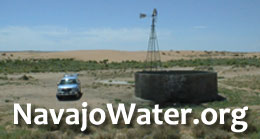
Reviews for Return of Navajo Boy
“Like a finely made rug, The Return of Navajo Boy contains multiple layers of color, construction, and meaning. . . A must see.”
-Native Peoples Magazine
“For more than a decade, film-maker Jeff Spitz helped his friend Elsie Begay push for removal of uranium-contaminated soil around her family’s compound west of Monument Valley. Now it’s getting cleaned up.
“The story of Jeff’s accidental discovery that Elsie had lived in a uranium house is told in Chapter 13 of Yellow Dirt. In 2001, because of his efforts, EPA demolished the dwelling of Elsie’s aunt, Mary Holiday. Jeff and Elsie kept pressing because the adjacent land was also filled with waste from an old mine at the top of the neighboring mesa. In 2011, cleanup is underway.”
– Judy Pasternak, author of Yellow Dirt: An American Story of a Poisoned Land and a People Betrayed
“We see your work on behalf of Navajo Families and deeply appreciate your dedication and commitment.”
– Gilbert Badoni, President of the Navajo Nation Dependents of Uranium Workers Committee
“This film should be part of any library collection. The film should be shown to as many as possible and made into school lessons.”
– Michael W. Simpson, University of Arizona
“I used this remarkable documentary in a large U.S. history survey course comprised mostly of students from Southeast Asian and Central American immigrant-refugee communities. They identified–palpably –with the separation anxiety, confused identity, and ethnographic co- modification felt by the youthful ‘protagonist’ in this moving historical narrative about the steep psychosocial costs of being uprooted from one’s family, home, and heritage. Although centered on the experiences of one Native American family, this film is an instructive text for all of us living through this era of pervasive social disasters and profound displacements.”
-Art Hansen, Professor of History and Director, Oral History Program, California State University in Fullerton.
“When people talk about the transforming power of filmmaking, they are usually referring to artistic statements or emotional catharsis, but The Return of Navajo Boy reminds that there is a different kind of power to be found in the moving image. . . Not only did the film lead to the reunion of the Cly family with the long-lost John Wayne Cly, but it also brought public and legal attention to the issue of uranium mining, a former way of life in Monument Valley that has led to an alarmingly high cancer rate.”
-Chicago Tribune
A decade after its release and initial acclaim, the documentary “The Return of Navajo Boy” is still garnering attention and educating audiences about Native American issues, past and present.
– Oregon Gazette Times
“…[T]he emotional contact alone seems to transcend all political issues.”
– The Independent, Santa Barbara, CA.
Though the film had its original premiere at the Sundance Film Festival in Park City, Utah, on Jan. 20, 2000, “The Return to Navajo Boy” hasn’t lost any steam in terms of its impact.
— The Columbia Chronicle
“This uranium horror story isn’t lifted from a Tony Hillerman novel—it’s the real deal… It’s well worth checking out for a truly authentic portrait of one of the Navajo families who played Comanche extras in The Searchers.”
– Culture Cartel
Awards and Honors for “The Return of Navajo Boy”
Official Selection, Sundance Film Festival
Programmer’s Choice Award, Plant In Focus Film Festival
Society for Visual Anthropology Award
Audience Award, Durango Film Festival
Best Documentary, Aboriginal Voices Film Festival (Toronto)
Selected to represent the United States at INPUT/2001, the international public television conference in Cape Town, South Africa
Official Selection, American Indian Film & Video Festival (San Francisco)
Official Selection, Native American Film & Video Festival (New York)
Official Selection, American Indian Film & Video Festival (San Francisco)
Official Selection, Siskiyou Environmental Film Festival (Oregon)
Official Selection, Stars in the Desert Festival (Arizona)
Official Selection, Big Sky Documentary Festival (Montana)
Official Selection, University of Miami Native American Film Festival (Ohio)
Official Selection, Amnesty International Human Rights Film Festival (Washington, DC)
Official Selection, Moab to Monument Valley Film Commission Festival (Colorado, 2011)
Official Selection, Sapatq’ayn Cinema Film Festival (Idaho, 2011)
Official Selection, Uranium Film Festival (Brazil, 2011)













